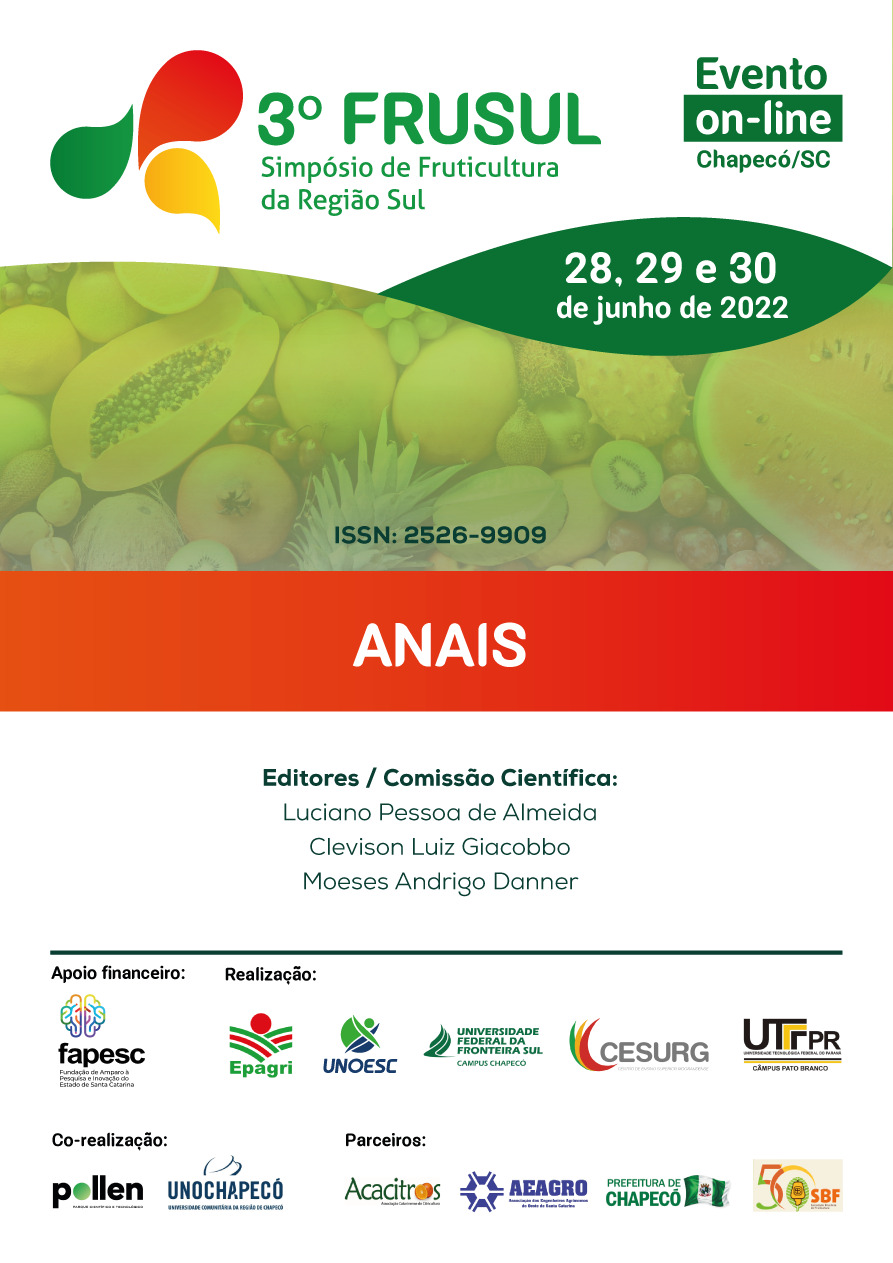Ecophysiological characteristics of the cultivar Sauvignon Blanc (Vitis vinifera) on Gravesac rootstock in São Joaquim, Brazil
Resumo
The evaluation of ecophysiological aspects of grapevines is important to understand the behavior of cultivars destined for the elaboration of quality wines and cultivated in several regions of the world. The objective of this work was to evaluate the ecophysiological characteristics of Sauvignon Blanc over the Gravesac rootstock in São Joaquim, SC in the 2018/19 harvest. The experiment was conducted in an experimental area in Santa Catarina, Brazil, 28º15'13''S; 49°56'10"W and 1,400 meters. The conduction system used was espalier with 3 x 1.2 m spacing and 2777 plants per hectare. Leaf area (leaf, branch, and plant) was determined from the length of the central, and lateral vein, as also leaf area analyzer automatized. Were also evaluated stomatal density, relative total chlorophyll content (SPAD), chlorophyll fluorescence (minimum (F0), and maximum (Fm)), and quantum yield for light and dark-adapted leaves. The different ways of measuring leaf area were correlated and the other variables made use of qualitative statistics with described character. The evaluations showed that the leaf area of the Sauvignon Blanc cultivar is related to the length of the secondary veins, the method showed a correlation of R²=0.9445. The leaf area values were 11.7 cm², 0,07 m², and 1.33 m² for leaf, branch, and plant, respectively. We observed 19 branches per plant and 59 leaves per branch. The stomatal density was 188 mm-². The relative total chlorophyll content was 35.2. The F0 of light- and dark-adapted leaves were 323 and 507, respectively. The Fm was 1616 for leaves in the light and 2651 for leaves in the dark. The maximum quantum yields were 0.8 for leaves in the light and 0.81 in the dark. The measurement of secondary vein length is suitable for non-destructively estimating the leaf area of the Sauvignon Blanc. The values verified for this cultivar leaves do not demonstrate impairment of the effective quantum yield of photosystem II by photoinhibition damage.


